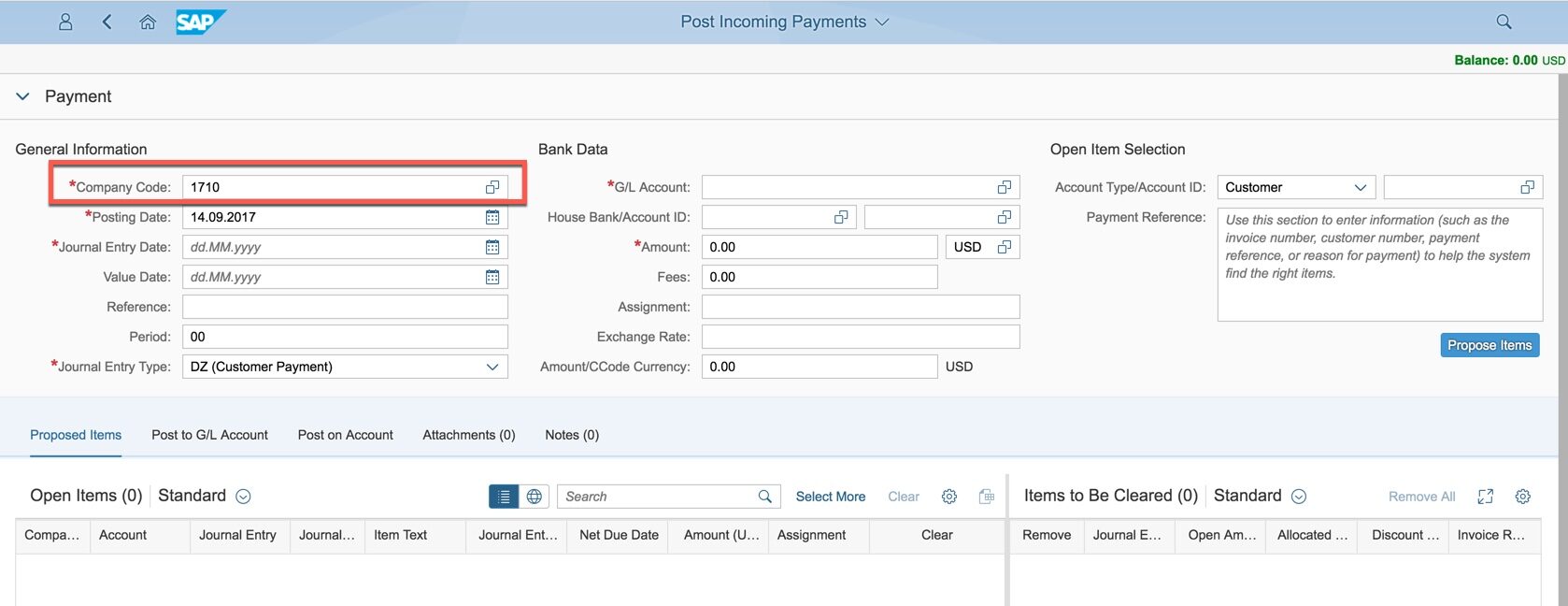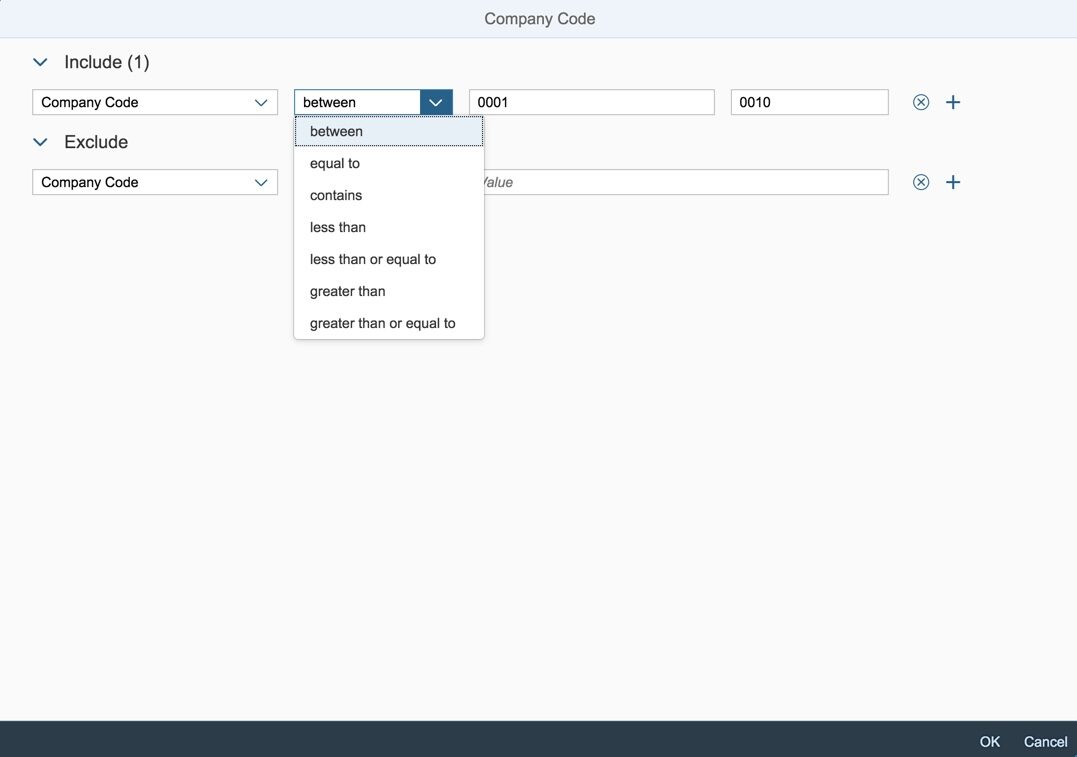Applying User Defaults in SAP S/4HANA
As a User Experience Lead, Launchpad Content Administrator, or Developer you may want to apply Default Values to your own custom apps, or adjust how default values are applied to delivered SAP Fiori apps or classic User Interfaces. This blog explains how Default Values work and what to do.
Most SAP S/4HANA apps have certain input fields where a business user usually or always enters the same information. The information is typically even not limited to the single app, but also relevant for other apps.
It makes sense to enable users to maintain a default value for this field in a central place, and then let the app prefill the relevant input fields with the default value, provided no other value is provided explicitly, such as by navigation from another app.
In SAP S/4HANA this central place is Default Values. Business users can set their own default values as explained in Setting Default Values for SAP S/4HANA.
NOTE: As a prerequisite the Default Values dialog needs to be activated and assigned to the user as explained in Activating Default Values for SAP S/4HANA.
TIP: If you are coming from a SAP Business Suite or Suite on HANA system, you may be familiar with an older similar concept called SET/GET Parameter IDs. Why don’t we use these in SAP S/4HANA? SET/GET Parameter IDs depend on a stateful paradigm where values are passed in ABAP memory. Web-based apps are typically stateless, so we need something more flexible. The good news is that we can pass Default Values to both stateless Fiori apps, and stateful classic user interfaces such as SAPGUI transactions.
Controlling how Default Values are applied across your SAP S/4HANA solution is typically part of the User Experience Lead or Launchpad Content Administrator role. Developers, basis experts, and other administrators may occasionally also be involved.
In this blog you will learn:
- How to apply Default Values to app parameters in the Launchpad Designer
- Which Default Values are delivered by SAP
Let’s get to it!
Applying Default Values in the Launchpad Designer
Applying default values in the Launchpad Designer is straightforward.
NOTE: You will need to know how to use the Launchpad Designer tool. You can find out more about configuring Launchpad content using the Launchpad Designer in the Fiori Launchpad Administration Guide.
You will need to:
- Know the technical ID of the Default Value
- Know the technical ID of the app parameter you want to set
- Open the Launchpad Designer tool in your web browser
- You can do this using SAPGUI transaction /UI2/FLPD_CUST to launch the Fiori app
- Or you can enter the Launchpad Designer URL in your web browser, specifying the relevant host and port of your SAP S/4HANA solution https://:/sap/bc/ui5_ui5/sap/arsrvc_upb_admn/main.html
- Find the tile catalog that contains the target mapping for the app
- You are only permitted to change custom tile catalogs.
- If the target mapping is in a SAP delivered Business Catalog or Technical Catalog you will first need copy a reference to the target mapping into a custom tile catalog where you can configure it.
- NOTE: For SAP delivered apps the original Business Catalog or Technical Catalog will be listed as part of the Implementation Information of the SAP Fiori app in the SAP Fiori apps reference library.
- Configure the Target Mapping of the app to set the parameter value to the Default Value. You do this in the Parameters section of the Target Mapping.
The format for the Default Value assignment is:
- %%UserDefault.%% for single value parameters
- %%UserDefault.extended.%% for extended values, i.e. where the user has maintained additional values and the app parameter accepts multiple values or value ranges.
You can find further details in the Fiori Launchpad Administration Guide in the section Configuring Navigation Parameters with User-Specific Default Values.
Applying the Default Value in a Target Mapping
In this example, you can see how the target mapping for the Post Incoming Payments app is configured with the default values for Company Code, Fiscal Year, Accounting Document Type, and Ledger Group.

You can see the format of the Default Value for Company Code in this close-up of the Parameters section.
If you set a default value for Company Code in Settings:
Then the default is applied to the Post Incoming Payments app.

Applying Additional Values in a Target Mapping
Some app parameters support extended values, where multiple values or value ranges can be provided for the same app parameter. In this example, you can see how the target mapping for the Manage Journal Entries app is assigned to extended default values for Company Code, Fiscal Year, and Accounting Document Type.
If you set Additional Values in Default Settings for Company Code:

Then the default value and the Additional Values are applied to the Manage Journal Entries app.
NOTE: If you have only maintained Additional Values and not a default value then just the Additional Values will be passed.
How Default Values are Applied
The default value will be passed to the app parameter whenever the app is launched provided there is no overriding parameter value passed, e.g. during navigation from another app.
Default Values Delivered by SAP
These are the currently available default values delivered by SAP as at September 2017, up to and including SAP S/4HANA Cloud 1708 and SAP S/4HANA 1709.
If you are coming from SAP Business Suite or Suite on HANA, you may want to map these to the equivalent SET/GET Parameter ID you know from SAPGUI so you can see those also.
And if you need to check the data type or length or other field-specific restrictions you can see the underlying Data Element id, so you can cross check that in the ABAP Dictionary e.g. using SAPGUI transaction SE11.
| Default Value | Technical ID | Equivalent to SET/GET Parameter ID | Area | Underlying Data Element |
| Account Assignment Category | AccountAssignmentCategory | KNT | MM | KNTTP |
| Activity Type | ActivityType | LAR | CO | LSTAR |
| Activity Type Group | ActivityTypeGroup | LSG | CO | LAGRU |
| Asset Class | AssetClass | ANK | FI | ANLKL |
| Asset Main Number | MasterFixedAsset | AN1 | FI | ANLN1 |
| Asset Subnumber | FixedAsset | AN2 | FI | ANLN2 |
| Bank | Bank | BNK | FSCM | FCLM_BAM_BANK_KEY |
| Bank Account | BankAccount | BKT | FSCM | FCLM_BAM_ACC_NUM |
| Bank Country | BankCountry | BKL | FSCM | BANKS |
| Bill-to party | BillToParty | VRE | SD | KUNRE |
| BOM Usage | BillOfMaterialVariantUsage | CSV | PLM | STLAN |
| Budget Entry Document Type | BudgetEntryDocumentType | DOTY | PSM | BUED_DOCTYPE |
| Budget Period | BudgetPeriod | BUDPER | PSM | FM_BUDGET_PERIOD |
| Budget Version | BudgetVersion | BP2 | PSM | BUKU_VERSION |
| Business Area | BusinessArea | GSB | FI | GSBER |
| Business Process | BusinessProcess | KWP | CO | CO_PRZNR |
| Change Number | ChangeNumber | AEN | PLM | AENNR |
| Chart of Accounts | ChartOfAccounts | KPL | FI | KTOPL |
| Collection Group | CollectionGroup | UDM_GROUP | FSCM | UDM_COLL_GROUP |
| Collection Segment | CollectionSegment | UDM_SEGMENT | FSCM | BDM_COLL_SEGMENT |
| Collection Specialist | CollectionSpecialist | UDM_SPECIALIST | FSCM | BDM_COLL_SPECIALIST |
| Commitment Item | CommitmentItem | FPS | PSM | FM_FIPEX |
| Company Code | CompanyCode | BUK | FI | BUKRS |
| Controlling Area | ControllingArea | CAC | CO | KOKRS |
| Cost Center | CostCenter | KOS | CO | KOSTL |
| Cost Center Group | CostCenterGroup | KSG | CO | KSGRU |
| Cost Element | CostElement | KAT | CO | KSTAR |
| Cost Element Group | CostElementGroup | KAG | CO | KAGRU |
| Cost Object | CostObject | KTR | CO | KSTRG |
| Credit Segment | CreditSegment | UKM_SEGMENT | FSCM | UKM_CREDIT_SGMNT |
| Customer | Customer | KUN | SD | KUNNR |
| Customer Group | CustomerGroup | VKD | SD | KDGRP |
| Display Currency | DisplayCurrency | FWS | FI | VDM_V_DISPLAY_CURRENCY |
| Distribution channel | DistributionChannel | VTW | SD | VTWEG |
| Division | Division | SPA | SD | SPART |
| Document Type | AccountingDocumentType | BAR | FI | BLART |
| Exchange Rate Type | ExchangeRateType | KUT | FI | KURST |
| Financial Management Area | FinancialManagementArea | FIK | PSM | FIKRS |
| Financial Statement Version | FinancialStatementVariant | BIL | FI | FIS_FSVERSN |
| Fiscal Year | FiscalYear | GJR | FI | GJAHR |
| Functional Area | FunctionalArea | FBE | CO | FKBER |
| Fund | Fund | FIC | PSM | BP_GEBER |
| Funded Program | FundedProgram | FM_MEASURE | PSM | FM_MEASURE |
| Funds Center | FundsCenter | FIS | PSM | FM_FICTR |
| G/L Account | GLAccount | SAK | FI | FIS_RACCT |
| G/L Account Group | GLAccountGroup | FCOM_GL_ACCT_GRP | FI | KTOKS |
| G/L Ledger | Ledger | GLN | FI | RLDNR |
| House Bank | HouseBank | FARP_HBKID | FSCM | FIS_HBKID |
| House Bank Account | HouseBankAccount | FARP_HKTID | FSCM | FAC_HKTID |
| Internal Order | InternalOrder | ANR | CO | AUFNR |
| Key Figure Group | AssetAccountingKeyFigureSet | FI | FAA_KEY_FIGURE_SET | |
| Ledger Fiscal Year | LedgerFiscalYear | (GJR) | FI | FIS_RYEAR |
| Ledger Group | LedgerGroup | GLDGRP_FLEX | FI | FAGL_LDGRP |
| Material Group | MaterialGroup | MKL | MM | MATKL |
| Material Number | Material | MAT | MM | MATNR |
| Material Type | MaterialType | MTA | MM | MTART |
| Payer | PayerParty | KRG | SD | KUNRG |
| Plant | Plant | WRK | MM | WERKS_D |
| Profit Center | ProfitCenter | PRC | CO | PRCTR |
| Project | Project | PSP | CO | PS_PSPID |
| Purchasing Group | PurchasingGroup | EKG | MM | BKGRP |
| Purchasing Organization | PurchasingOrganization | EKO | MM | EKORG |
| Sales Group | SalesGroup | VKG | SD | VKGRP |
| Sales Office | SalesOffice | VKB | SD | VKBUR |
| Sales Order | SalesOrder | AUN | SD | VBELN_VA |
| Sales Organization | SalesOrganization | VKO | SD | VKORG |
| Segment | Segment | FUCN_SEG | FI | FB_SEGMENT |
| Shipping Point | ShippingPoint | VST | LE | VSTEL |
| Sold-to party | SoldToParty | VAG | SD | KUNAG |
| Statistical Key Figure | StatisticalKeyFigure | STA | CO | STAGR |
| Statistical Key Figure Group | StatisticalKeyFigureGroup | PC5 | CO | STAGRGRP |
| Storage Location | StorageLocation | LAG | MM | LGORT_D |
| Supplier (Vendor) | Supplier | LIF | MM | VDM_LIFNR |
| Tax Is Calculated Automatically | TaxIsCalculatedAutomatically | XTX | FI | XMWST |
| Valuation Type | ControllingValuationType | BWT | CO | BWTAR_D |
| WBS Element (external Number) | WBSElement | PRO | CO | PS_POSID |
| Work Center | WorkCenter | AGR | MM | ARBPL |
Becoming a SAP Fiori for SAP S/4HANA guru
You’ll find much more on our SAP Fiori for SAP S/4HANA wiki
Brought to you by the S/4HANA RIG
New NetWeaver Information at SAP.com
Very Helpfull




